All about levels

One of the main principles of construction is that the base of the structure, whether it is a foundation or a floor, must be horizontally flat. If you do not follow this rule, there can be no question of installing the same furniture, and the entire structure may collapse if, in the calculations, the designers started from a flat surface that does not exist. To avoid mistakes at the design stage and to correctly imagine the terrain, a special geodetic device is used - a level.
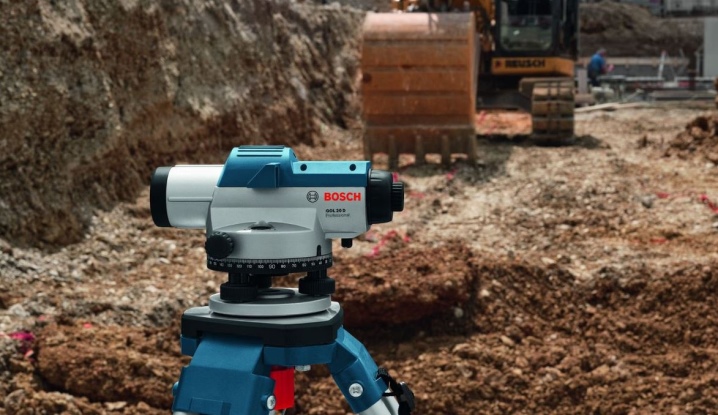
Device
In fact, a modern level is not one device, but a group of them, in which each mechanism allows you to achieve the set goalbut does it in different ways. Accordingly, the internal structure of the unit is also significantly different.


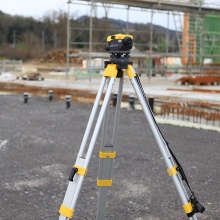
The simplest level, which can be considered a classic, is a combination of several of the simplest construction tools. It is based on an ordinary bubble level, a magnifying ("telescope") tube and a sighting axis. With such a design, the operator's vision accuracy certainly plays an important role, because the device itself does not measure anything, it only allows you to "measure by level" the features of the landscape or structure.
Modern models of levels have additional functions, but the optical version does not have them, therefore it is often used in combination with other construction tools - a centimeter rod and a thread rangefinder.
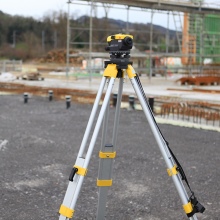

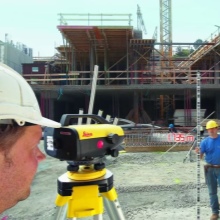
Digital technologies were invented in order to eliminate human error, and digital levels, accordingly, do almost everything for their operator - all that remains is to point the tool at the surfaces to be measured... In this case, the device of the device is approximately the same as that of its optical "colleague", only all information is collected by the device itself and displayed on the screen.



Today the most popular is the third type of levels - laser... The unit has a collimator sight - about the same as on modern weapons. Leveling is done based on the deviations observed in the direction of the beam, which is usually done for indoor applications. red, and for street surveys - green.



Any level is installed on tripod, which allows you to achieve a certain stability of the device even in conditions complete absence of strictly horizontal surfaces. In most cases, tripods are made from aluminumwhich is lightweight and very durable at the same time. Alternatively, can be used wood, which is more expensive and almost always heavier, but does not bend and guarantees maximum stability.
Compact tripods for household use can be made from fiberglass, while the role of material selection for the body of the unit itself is no longer so fundamental - usually you need a strong and reliable substance, which turns out to be a special plastic or metal. The same goes for the fasteners.




The level itself cannot be called too heavy - depending on the model and the materials used for the manufacture, its weight may fluctuate from 400 grams to 2 kilograms. For an optical device, a weight of about 1.2-1.7 kg can be considered the norm, but it is important not to forget that the mechanism is practically useless without the included tripod, which means that the total weight of the structure can easily reach five or more kilograms.
Since we are talking about the mass of the device, let's name the approximate dimensions for optical products: 12-20 cm in length, 11-14 cm in width and 12-22 cm in height. As for digital devices, their sizes also depend on the diagonal of the screen, which in some samples adequately competes with the diagonal of fashionable smartphones.


Principle of operation
Optical levels, which are also called optical-mechanical, are still found today at some sites, but are gradually going out of circulation for two reasons: firstly, they do not protect against possible operator error, and secondly, they require two people to service at once. The operator can track the difference in levels through the telescope - a beam of light passes into it, while the tube itself rotates in a horizontal plane. The second person is needed in order to hold the measuring stick while the first one takes readings.


The workers themselves have to adjust the optical level and this is another risk for the accuracy of the result.
It is much easier to work with a laser level, if only because it leaves a colored ray visible to the human eye, which replaces an imaginary line in an optical unit. Thanks to this principle of organization of work, any deviation of the beam from a straight line, if it suddenly happened due to the reflectivity of the surface, will be striking.
Most modern laser levels can do even more - if necessary, they project vertical and horizontal lines onto the surface, build corners, and so on. Some models also allow remote control - such a unit can be serviced by one person on the site, provided that it works with a partner.


A digital level is also either optical-mechanical or laser, but the work with it is significantly computerized. The design assumes the presence of its own processor and memory, in this case the device itself acts as a partner for its operator - a second person is not needed to use it. The on-board computer of the unit allows you to more accurately assess the differences and more correctly evaluate the geodetic picture, in addition, it clearly submits all the collected (and already calculated) information to a special screen.
Among other things, the device can also remember the data that it recorded, which is very convenient for modeling and design. The whole principle of operation of such a level is built on modern technologies: even the divisions on the rail are applied in the form of a barcode so that the computer can read them automatically.


What is it needed for?
The main task for the leveling process is to compare the visible surfaces of the future construction site to determine the presence of slopes or other irregularities. The device measures the difference in level between two surfaces and allows you to get an adequate idea of what the relief looks like - therefore, the data obtained can be used either for perfect alignment of the site, or in order to use these very irregularities.

Levels are used in the following cases:
- for the correct preparation of projects of any kind, detailed geodetic maps and high-precision plans;
- for the installation of any technical structures, whether it be power line supports or a sewage system, which is changed during the renovation of an apartment;
- for decorative or for any other purpose of leveling large areas, for example, for the construction of playgrounds or sports grounds;
- to predict the likely subsidence of a structure, as well as to adequately assess the scale of what is happening and take measures to avoid collapse;
- for installation in the process of building or renovating a house of structures that traditionally require a flat horizon - these include floors, ceilings and some other surfaces.
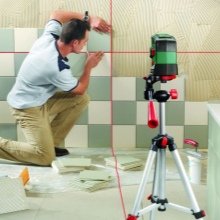


Most of the complex models of levels are rare and very expensive equipment, entrusted only to specialists of the highest level, but simpler models used for household repair of premises can be found in any man with hands. Such units are most often called laser levels and their use in everyday life is very wide. - without them, it is extremely difficult to correctly mark the corners or lay tiles and other similar finishing materials evenly.
If you treat the task with the utmost responsibility, then even for gluing wallpaper, such a device is necessary - thick varieties of canvases are glued only end-to-end, and therefore need an ideal vertical of the joints.

A level with a compensator is also useful for an electrician who, in the process of installing elements of an electrical network (switches, sockets, fuses), it is desirable to maintain a single level for all of them.
Views
Above, we have already superficially walked through the main types of such equipment, but such a classification would be too superficial - due to the numerous tasks being solved and the variety of ways to solve them, such units are divided into a much larger number of types. It is worth paying at least a little attention to each individual type, starting from which main class it belongs to.

Electronic (digital)
Modern models, as mentioned above, are singled out into a separate class rather by additional features in the form of the ability to display and analyze the information received. Wherein digital level still refers to optical-mechanical or laser and it is very easy to distinguish between them - the laser will have a visible beam, while the optical unit will perform its calculations without any visible outlines on the walls.

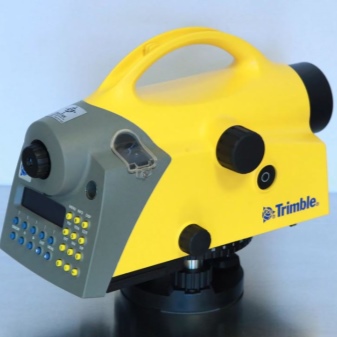
Almost always, such a construction tool should be considered professional and even industrial - it is a very expensive device that an amateur simply cannot afford.
There is no particularly detailed classification of digital levels yet. for the reasons that, firstly, they are still represented by a small number of models, and secondly, they may differ in a mass of characteristics. From the classification according to one's own abilities, it is worth mentioning only the criterion of accuracy. But in most cases, expensive equipment demonstrates the ability to level surfaces very accurately.
Otherwise, the differences relate mainly to comparisons of on-board computers: in particular, the processor power, the ability of the software to perform various calculations, the amount of memory for storing the collected information and calculation results.


Laser
This type of geodetic instruments in terms of classification is already much more diverse, the differences may even lie in a key aspect - the principle of operation. In positional models, the laser beam emitted by the device at its base passes through a special prism, while in the rotary model, a special lens is used instead of a prism.
It is the rotary version that is considered much more suitable for performing more complex tasks. - at least it allows 360-degree circular measurements, which cannot be done with a positioning unit, and it also provides an increased radiation range of the visible beam and has additional useful functions.

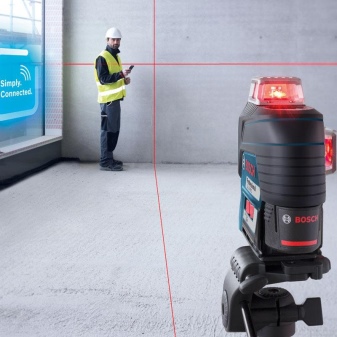
There is also a somewhat conventional division into household and professional laser levels., which has no clear boundaries - the difference lies in the number of the same additional functions and build quality, and both comparisons are, of course, in favor of professional models.First of all, an adequate level should be protected from moisture and dust penetration into the case, and if for a household model this characteristic is simply desirable and indicates a responsible attitude of the manufacturer to his work, then for professional levels this is a mandatory feature, without which such a category is simply not get there.


The professional unit not only gives more accurate results, but also helps its operator in the setup process - a special self-leveling function of the tool ensures that at least the tool itself is installed evenly, which means that the risk of error or operator irresponsibility is minimized. Besides, professional models are often equipped with a beam receiver - with such an additional unit, both the measurement range and their accuracy increase significantly.
As for the most functional varieties of professional laser levels, they also imply projection of the mesh onto any surface, the possibility of visual construction of corners and even the function of remote control, so that there is no need for the second worker to go to the site.
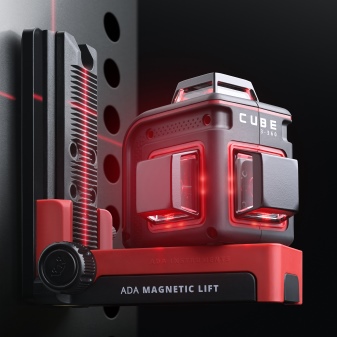

Laser levels also differ in the color of the emitted beam, but this is not at all a designer's whim. It is generally accepted that models with a green beam are designed specifically for work in open space, since green waves are very stable and can travel more than a kilometer without distortion, ensuring high measurement accuracy. Green the color is well fixed by the human eye, but can be lost in the grass, especially in bright sunlight.
Levels with red beam is much more often used in indoor conditions, the effective range never exceeds 500 meters, but this point needs to be clarified for each individual model - simple units can work only 10 meters at all.


The laser unit, like the digital one, requires a power source - although such a device does not know how to carry out independent calculations, it provides visualization of the beam. A typical solution for a level is a battery that needs to be recharged periodically. The battery itself can be both removable and non-removable - the first option is good because theoretically it can be replaced in the event of a breakdown, while the second is supposed to be initially more reliable and durable, although you should not rely heavily on this. If we are talking about a small and simple level that can fit in a pocket, do not be surprised if it runs on ordinary batteries.


Occasionally there are also network levels, but for obvious reasons they are not in great demand and, in principle, can only be used in indoor conditions.
Optic
The optical-mechanical level is such a simple design that it is simply impossible to classify it on a large scale - there are usually no radical differences between the models. The only thing, what you should pay attention to is the degree of accuracy, which is indicated by special terms.
For example, when you see an optical device of a technical degree of accuracy, do not rush to be enchanted - the technique here is by no means subtle, with this name the creators disguised a mechanism that is suitable for solving only the simplest problems. As for truly useful units, everything is clear with their quality right away - they are called accurate and high-precision, and in the second case, this is not just a beautiful wording, but a very real difference in accuracy.


Manufacturers and model overview
As is the case with many other devices, it is often easier for an inexperienced consumer to choose a potential purchase according to the criterion of a well-known and demanded brand, rather than delve into the technical characteristics in the most detailed way and look for numerous reviews. If you want to purchase the simplest optical level, then you are unlikely to need it - they differ from each other only in little things.

In the case of the purchase of expensive digital equipment, you should not rely on only one brand, if only because the device is purchased for complex permanent work and must be chosen by a professional... It is quite another matter if you take a mid-level laser level, which will not be used to perform extremely complex calculations, but still must be of high quality and good - in this case, the manufacturer's criterion and the specific model may well work.

Let's consider some of the most popular models.
- KaiTian 5 Lines 6 Points is considered to be one of the best 360 degree levels. The unit works up to 10 hours on battery power, and can be connected to the network. Due to the fact that it rotates freely in all directions, it does not have to be rearranged during operation, the device is actively used even by professionals.


Despite some cumbersomeness, this is the most functional model.
- «Ermak 659-023»Domestic production can be considered a leader in outdoor conditions. With a 25-meter beam, such a device is conveniently compact and able to function in any weather conditions, in addition, the domestic origin of the mechanism had a positive effect on its cost. Of the minuses, it is worth highlighting a short battery life (no more than 3 hours) and relevance only for small projects.

- Bosch PLL 360 Set - a representative of one of the most famous brands of versatile (including construction) equipment, one of the best linear levels. The name of the company in this case is not an empty phrase, because the accuracy of measurements, on average, is noticeably higher than that of any other similar units. Among the advantages, it is also worth highlighting the ability to rotate 360 degrees. Unfortunately, there are certain limitations: firstly, this is a device especially for small rooms, because the beam range here is only 20 meters, and secondly, if you need to replace the battery, you need to take a part from the same manufacturer - analogues of the same size will not work.


- Condtrol xliner combo set It is considered a top-end level for professionals, since at the same time it also performs the functions of a plumb line and an axis builder. Reviews indicate that this is a universal machine for measurements of any kind. The manufacturer made sure that the consumer did not need anything - the equipment here is also at the highest level. In addition, the unit is adapted to work in extreme conditions - even the harsh Russian winters are not afraid of it.
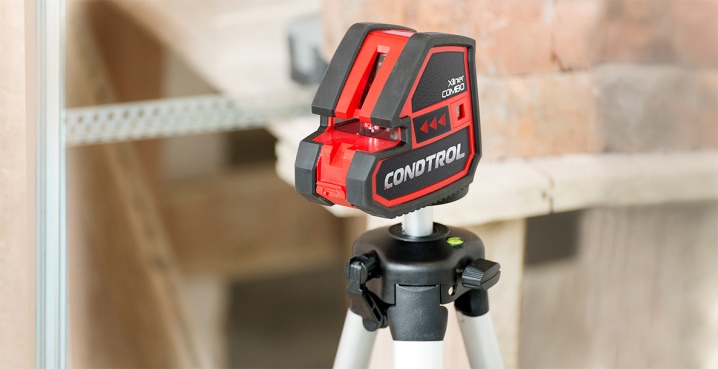
There would be absolutely nothing to find fault with this model if the highest quality did not cost so much, although such an expense, of course, will pay off in the hands of a specialist.
- Kapro 895 All Lines called among the best laser levels among those models that are also equipped with a plumb line. This is a great tool for future renovation of an apartment - it offers many verticals, so that the finish and installation of the outlets will look perfect. The presence of a plumb line and the ability to rotate 360 degrees allows you to quickly mark the entire room without rearranging the structure. The latter is very important, because the unit is large and heavy. By the way, it will cost a pretty penny to the future owner.

How to choose?
The level is an extremely important tool, the ability of a building (or even repairs inside it) to hold out as long as possible depends on its readings, and even incorrect measurements can even lead to disaster.

Therefore, the level must be chosen wisely - in order to invest in the budget, achieve normal quality and at the same time not overpay for unnecessary things.
One of the most important mistakes of most inexperienced consumers is the desire to purchase the highest quality and most powerful device. In a domestic environment, the unit is usually only needed for indoor repairs, which means that you no longer need to focus on the long beam length, and even an inexpensive model will do. In addition, in rooms that are not very large in the conditions of an average domestic apartment, angular errors usually do not go off scale, so there is no need to chase outstanding accuracy either - let the builders of large-scale objects do this.

In fact, when choosing an optical level for a household level, you just have to inspect it for damage to the case, as well as check the correctness of the built-in level on any other level - that's the whole choice.
It's another matter if you are actively involved in construction, including in open areas, and understand that buying at least a semi-professional device is required. Here the run-up in quality and characteristics is already much more serious, therefore it is important to purchase a good level that will not let you down and will have all the necessary functionality.
Pay attention to the following criteria when choosing expensive equipment.
- The presence of additional rays. The simplest device provides only two of them - one for vertical and horizontal. Additional rays emanate from sources on the sides of the main body, thanks to them, you can build a simple mesh that will make up a concept of the surface topography quickly and efficiently.

- Glow range. Inexperienced consumers may have heard that the laser beam actually hits a little further than it is written in the specifications for each specific model. This is true, but light radiation has the property of gradually expanding to the sides, therefore even a narrow laser point at a great distance begins to spread out.

Having exceeded the distance specified in the instructions, you may see the mesh you need, but the manufacturer is no longer responsible for its correct drawing.
- Self-leveling system. Accurate measurements are only possible if the level is perfectly level. This can be achieved manually, but it is the fiddling with preliminary settings that makes the operator's work difficult, painstaking and slow.

Having the implement self-leveling will save you time and hassle, and improve leveling accuracy.
- Beam sweep angle. According to most professionals, 110-130 degrees is ideal.

- Power supply. Practice shows that for the power source in the level, it is not so much the ability to work for a long time that is important, but the utmost simplicity, which allows you to replace this part at any time - this feature makes the device almost eternal. While for most other tools, batteries are not very desirable as the main source of power, then for a level that consumes little power, they are suitable - as long as they belong to a universally available standard.

- Necessary accessories. The level itself is useless - at least it also needs a tripod, as well as some other devices. It's good if the manufacturer took care of assembling a complete set for you - this way you will save money on a wholesale purchase, and get one hundred percent confidence in the full compatibility of all elements. In addition to a tripod, protective laser goggles can be a useful addition to the set - they protect your eyes and allow you to see the beam better in bad weather conditions. You also cannot do without various clips in the form of clothespins or magnetic fasteners.
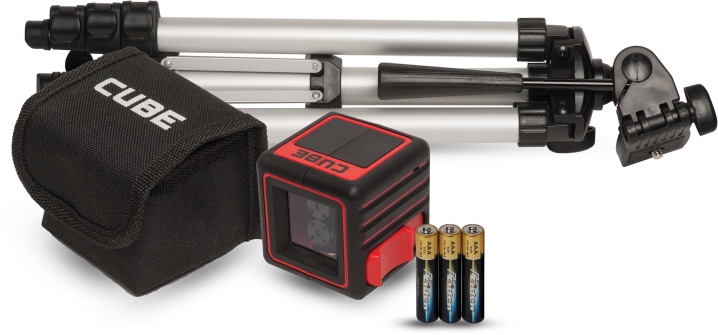
It is not necessary to choose the unit with the most generous set - you may never need some components in your life, but buying the same set separately will definitely cost more.
- Features of the case. If you are taking an expensive and very delicate technique, it is important to choose a model that is as protected as possible from any troubles.The IP54 marking is considered the best of its kind - the level of this class is not afraid of either dust or moisture, it can work on a dusty construction site even in the rain. Caring manufacturers perform expensive models in a shockproof case, and even with damper pads - in the event of a unit falling, such characteristics greatly increase the device's chance of survival. Ideal would be a performance with internal shock absorbers - with them valuable electronics will definitely stay in order.

Operating rules
A level is essential for proper leveling of the site, but it will be of no use if not used correctly. One of the prerequisites that must be met is the so-called main geometric condition of the level. It can be described in a few simple theses.
- Horizontal position must be strictly adjusted to the bubble level. Having installed the device on a tripod, it is directed to one side and, using the screws, is aligned so that the air bubble is exactly at the zero point. After that, the telescope, together with the level, is turned 180 degrees, and the bubble should remain where it was - if it is, the first point is completed. Otherwise, the operator, using screws and other adjusting fasteners, must ensure that the bubble is in the specified place and does not move.

- Vertical position it is necessary to verify the plumb line. For the purity of the experiment, the one is suspended in a place that is reliably protected from drafts and wind, while the instrument must be heavy in order to be minimally susceptible to any external factors. The level is installed at a distance of 20-25 meters from the suspended plumb line and its position is checked against the vertical thread of the grid. If there is a deviation of at least 0.5 mm, the unit requires further adjustment.

In addition, you should adhere to some other rules when working with the tool. There are two main tactics for working with the unit - the so-called "forward" and "from the middle" methods. In the first case, the level is installed at a certain starting point, its height above the floor level is measured, and already on the basis of these indicators, conclusions are drawn about the height difference within the site. The second method is somewhat more common, its essence is to place the device in the middle between two points, each of which should be evaluated.


Setting up the tripod
In most cases, you should use the “from the middle” measurement method, because the tripod is set at approximately the same distance from the extreme points of the line. The screws on the legs can be extended to any width, due to which the operator can choose the height of the device - this moment is important for the convenience of the staff, and therefore affects the quality of measurements.
Having found a convenient height, the screws are tightened, fixing the tripod in the selected position, and only after that the level itself is attached to the tripod head. The position of the tripod legs depends on the features of the relief, but the head should be located horizontally - for this it can be adjusted with screws, checking the level of the device.

Installation and calibration of the level
The installation process is usually intuitive - there is a special fastening screw on the tribrach, with which the unit is securely fixed on the stand. After that the operator must once again make sure that the level itself is in a strictly horizontal position in all planes, having achieved the fulfillment of the main geometric condition... Before starting work, you need to double-check the correct operation of all optics and re-verify that the position of the instrument is perfectly adjusted. It is strictly forbidden to start leveling without this precaution.

Focusing the optical-mechanical unit
Focusing correctly is half the battle in these dimensions. First you need to make sure that the unit is in a horizontal position: guiding the lifting screws, the operator must find such a position of the built-in level, at which the level bubble would be exactly in the middle, and fix this position.

Next you need focus optics, any vertical surface in the vicinity is suitable for this purpose. The telescope is aimed at it and the eyepiece ring is rotated until a clear visibility of the reticle is achieved. After that, the level is transferred to the rail and, with the help of a special focusing screw, the visibility of the scale is also adjusted.
Another important task is to center the level. To do this, it is installed at the starting point of the line, as it would be with the "forward" working method. The fastening screws are loosened until the operator searches for the position of the tool in which it will be adjusted exactly to the vertical overhanging plumb bob. After that, you need to carefully tighten the screws, constantly checking if the position of the tool is not lost due to the operator's activity.

Measurement and data capture
Setting the level for work "from the middle" usually gives more accurate results, so if possible, this method should be preferred. Having found the midpoint between the two extreme ones and preparing the tool according to the above instructions, a measuring rod is installed at the point, which should coincide with the vertical on the reticle.
The level is sequentially installed on both sides of the installed measuring stick, readings are taken in both directions - this allows you to minimize the likelihood of error. The measurement results must be recorded immediately after taking them; in the above-described two-sided measurement, the arithmetic mean is considered the final result.

For information on how to use the level correctly, see the next video.













The comment was sent successfully.